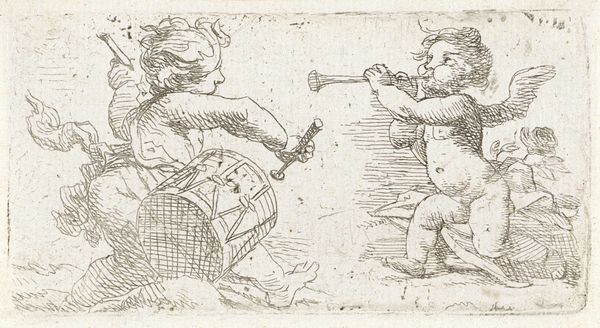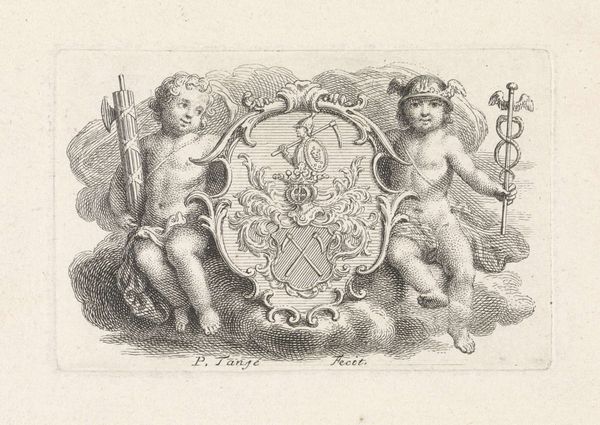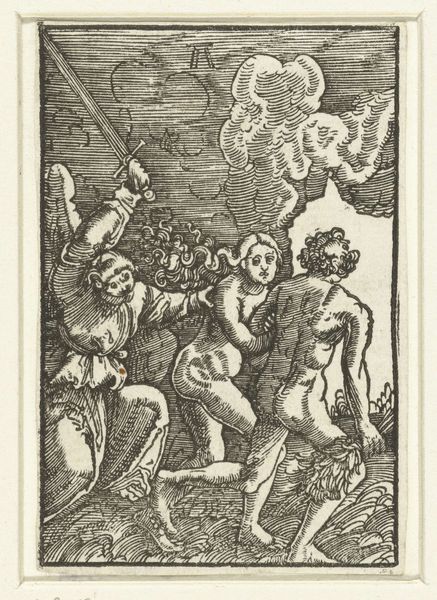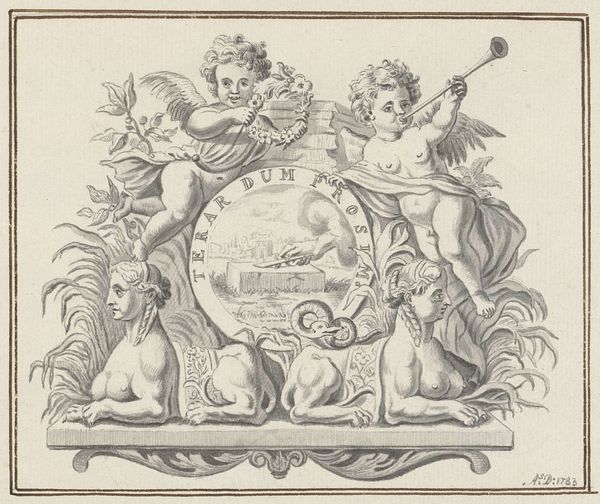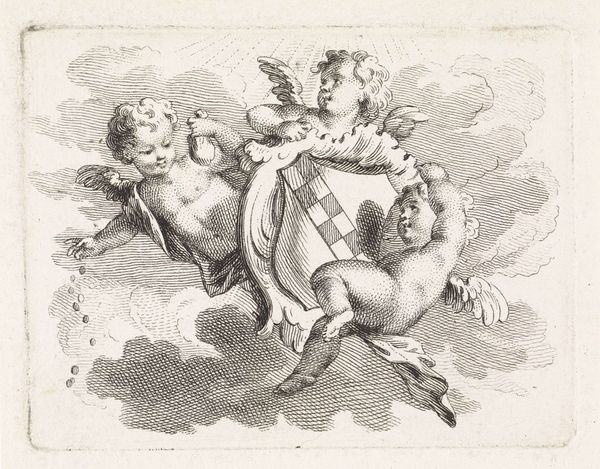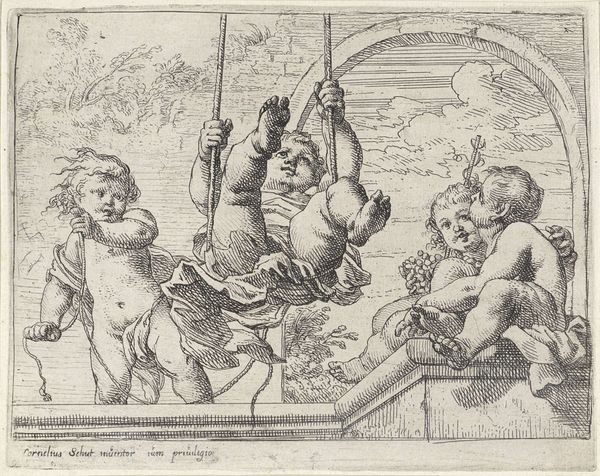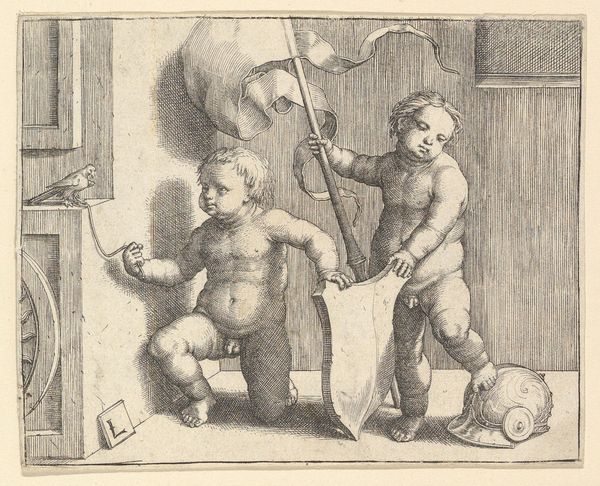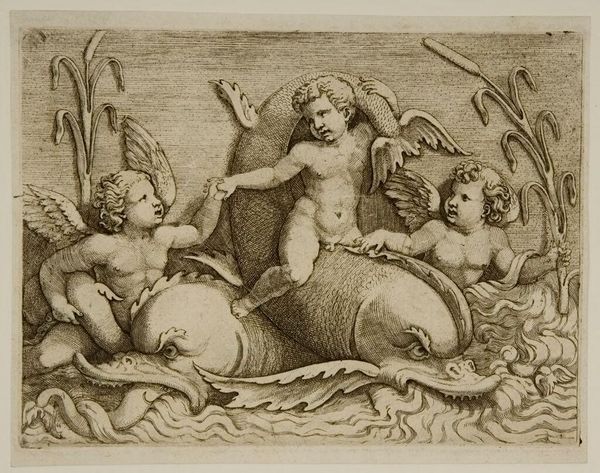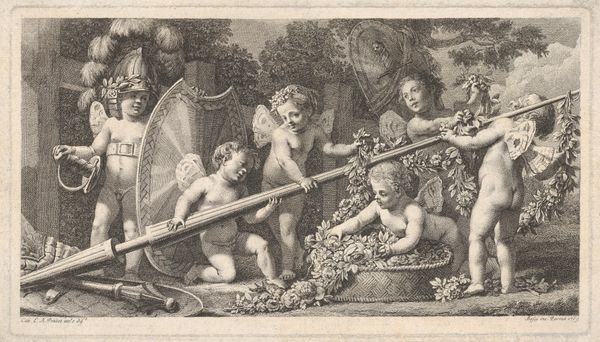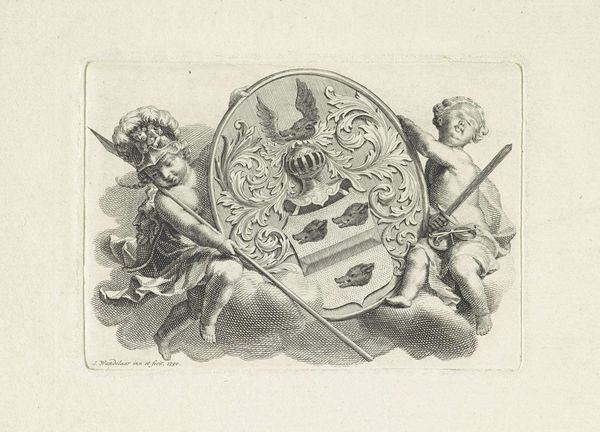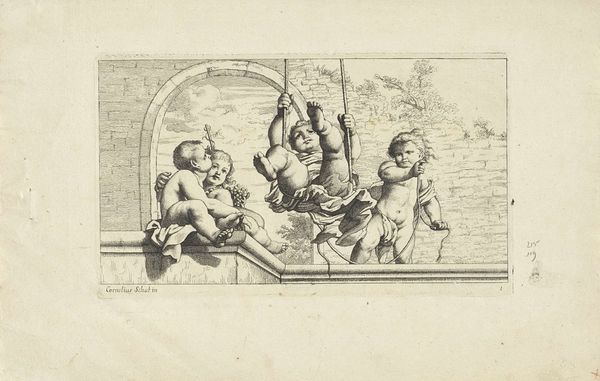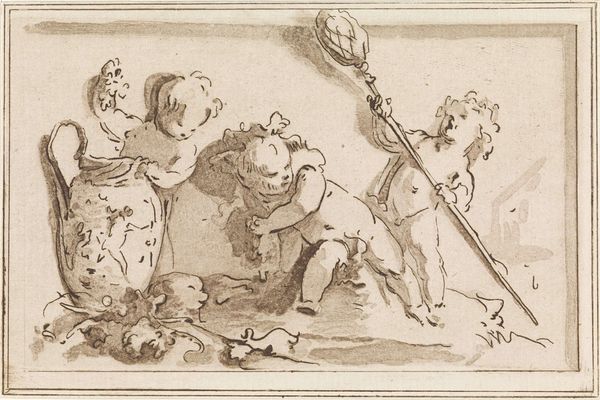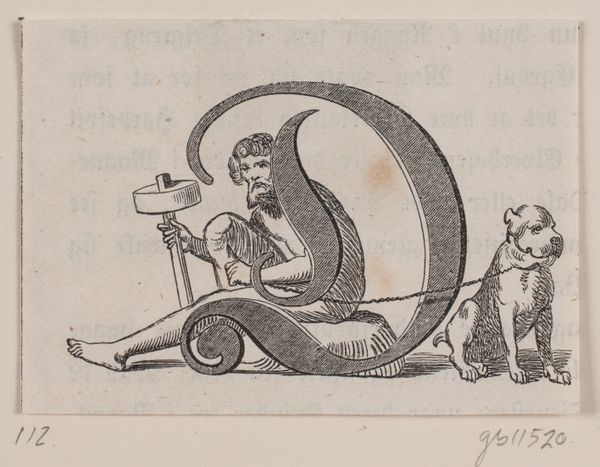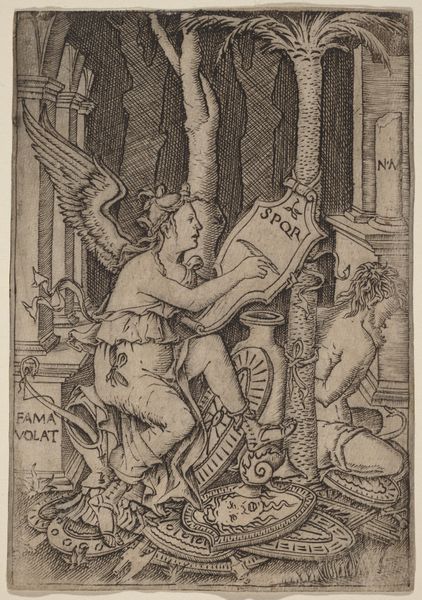
engraving
#
allegory
#
baroque
#
figuration
#
engraving
Dimensions: height 83 mm, width 111 mm
Copyright: Rijks Museum: Open Domain
Bernard Picart created this print of two putti with the tablets of the law and a censer, sometime around the turn of the 18th century. It’s made using a printing technique called engraving, where an image is incised into a metal plate, inked, and then pressed onto paper. The image shows two cherubic figures amidst swirling clouds. One holds the tablets of the law, while the other suspends a censer, releasing smoke. Look closely, and you’ll see that the quality of the engraving gives a crispness to the lines, especially in the billowing clouds and the delicate features of the putti. Engraving demands precision and control. The engraver uses a tool called a burin to carve lines into the metal, each stroke deliberate and unchangeable. This process is labor-intensive, requiring hours of skilled work to create the final image. In Picart's time, printmaking was a key means of disseminating imagery, connecting the skill of the artist to a wider world of commerce and consumption. This print testifies to the enduring power of meticulous craft.
Comments
No comments
Be the first to comment and join the conversation on the ultimate creative platform.
